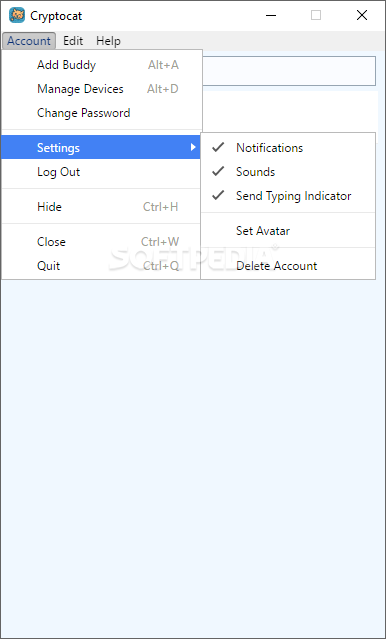
Free cryptocat how to#
Partly because the emphasis is on open technology built by volunteers, users are rarely if ever redirected how to get back on track if they make a mistake or reach a dead end.
Free cryptocat free#
Other tools, like Pretty Good Privacy or its slightly improved free alternative GnuPG, still seem needlessly difficult to operate.

The anti-censorship circumvention tool Tor has grown progressively easier to use, and donors and technologists are now working to make it easier and faster still. Yet it is rarely practiced in the Internet freedom community. But in doing so, technologists and donors are avoiding a crucial question: Why aren’t more people using security tools? These days–20 years into what we now know as the Internet–usability testing is key to every successful commercial online venture. government agencies–tend to back the development of new tools rather than ongoing usability training and development. (Kind of like journalists breaking a story.) Training people in the use of security tools or making those tools easier to use doesn’t bring the same sort of credit. They’re motivated by the recognition one gets from building an exciting, important new tool. Who will help bridge the gap? Information-freedom technologists clearly don’t build free, open-source tools to get rich. And no one’s going to learn them,” a journalist for a major U.S. Yet, in the real world, from Mexico to Ethiopia, from Syria to Bahrain, how many human rights activists, journalists, and others actually use them? “The tools are just too hard to learn. Other, older digital safety tools are “a little harder to use, but their security is real,” Ball added in Wired. So we are back to where we started, to a degree. That made Cryptocat potentially vulnerable to attack without the end user knowing.

Free cryptocat code#
Responding to another Wired piece just weeks before, Patrick Ball said the prior author’s admiration of Cryptocat was “inaccurate, misleading and potentially dangerous.” Ball is one of the Silicon Valley-based nonprofit Benetech developers of Martus, an encrypted database used by groups to secure information like witness testimony of human rights abuses.īut unlike Martus, which encrypts its data locally on the users’ machine, the original version of Cryptocat was a host-based security application that relied on servers to provide the code for the encryption and decryption of any online chatting. Analyst Christopher Soghoian–who wrote a Times op-ed last fall saying that journalists must learn digital safety skills to protect sources–blogged that Cryptocat had far too many structural flaws for safe use in a repressive environment.Īn expert writing in Wired agreed. Within three months of winning a prize associated with The Wall Street Journal, Cryptocat ended up like a cat caught in storm–wet, dirty, and a little worse for wear. Kobeissi was profiled in The New York Times Forbes and especially Wired each praised the tool. Journalists and many human rights activists, for their part, complain that digital safety tools are too difficult or time-consuming to operate, and, even if one tried to learn them, they often don’t work as expected.Ĭryptocat promised to finally bridge these two distinct cultures. But for years digital safety tools have been so hard to use that few human rights defenders and even fewer journalists (my best guess is one in a 100) employ them.Īctivist technologists often complain that journalists and human rights defenders are either too lazy or foolish to not consistently use digital safety tools when they are operating in hostile environments.

Of course, no tool is completely safe, and much depends on the capabilities of the eavesdropper.
Free cryptocat software#
Technologists wary of government surveillance have been designing free encryption software since the early 1990s.

A Lebanese-born, Montreal-based computer scientist, college student, and activist named Nadim Kobeissi had developed a cryptography tool, Cryptocat, for the Internet that seemed as easy to use as Facebook Chat but was presumably far more secure.Įncrypted communications are hardly a new idea. Alhamdulillah! Finally, a technologist designed a security tool that everyone could use.


 0 kommentar(er)
0 kommentar(er)
